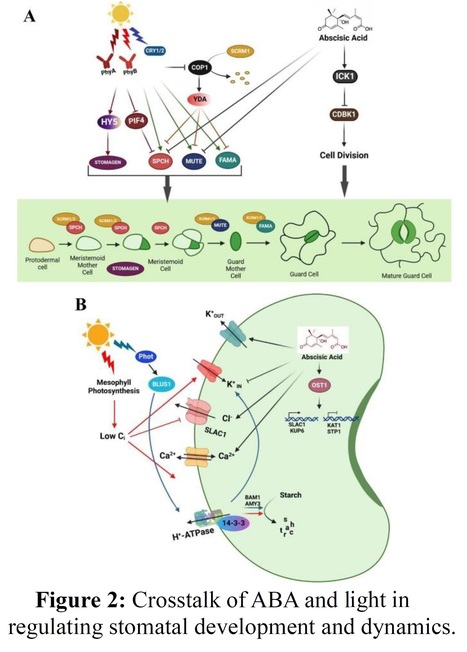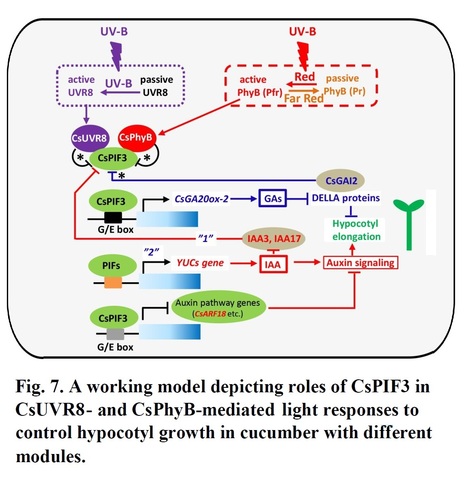Authors: Kalyan Mahapatra, Shubhi Dwivedi, Arpan Mukherjee, Ajar Anupam Pradhan, Kavuri Venkateswara Rao, Deeksha Singh, Lavanya Bhagavatula and Sourav Datta.
Journal of Experimental Botany (2024)
Abstract: "The exogenous light cues and the phytohormone Abscisic acid (ABA) regulate several aspects of plant growth and development. In recent years, the role of the crosstalk between the light and ABA signaling pathways in regulating different physiological processes has become increasingly evident. This includes the regulation of germination and early seedling development, control of stomatal development and conductance, growth and development of roots, buds, branches, and regulation of flowering. Light and ABA signaling cascades have various convergence points at both DNA and protein levels. The molecular crosstalk involves several light signaling factors like HY5, COP1, PIFs and BBXs that integrate with ABA signaling components like the PYL receptors and ABI5. Especially, ABI5 and PIF4 promoters serve as key “hotspots” for the integration of these two pathways. Plants acquired both light and ABA signaling pathways before they colonized land almost 500 million years ago. In this review, we discuss the recent advances in the interplay of light and ABA signaling regulating plant development and provide an overview of the evolution of these two pathways."



 Your new post is loading...
Your new post is loading...










